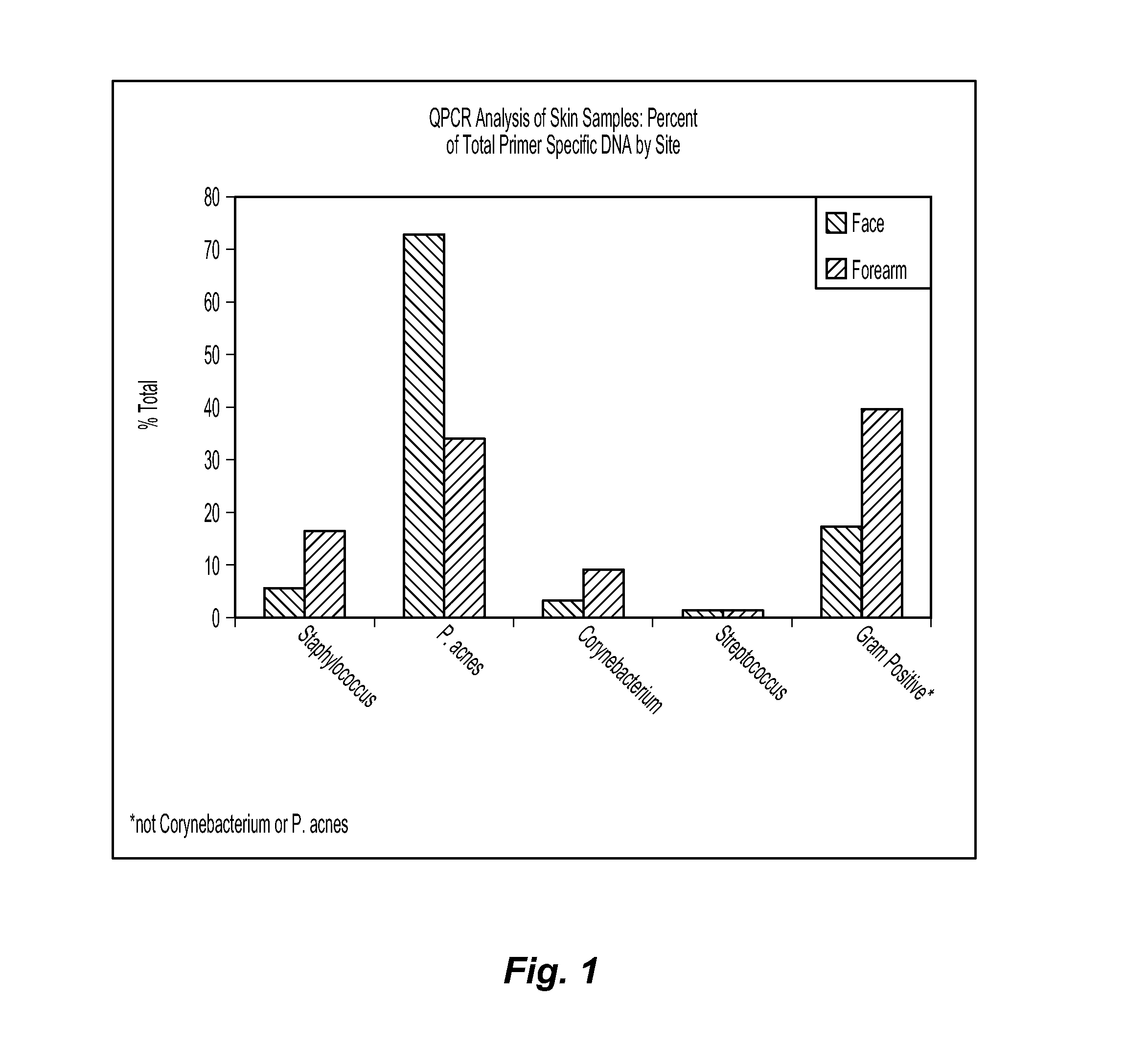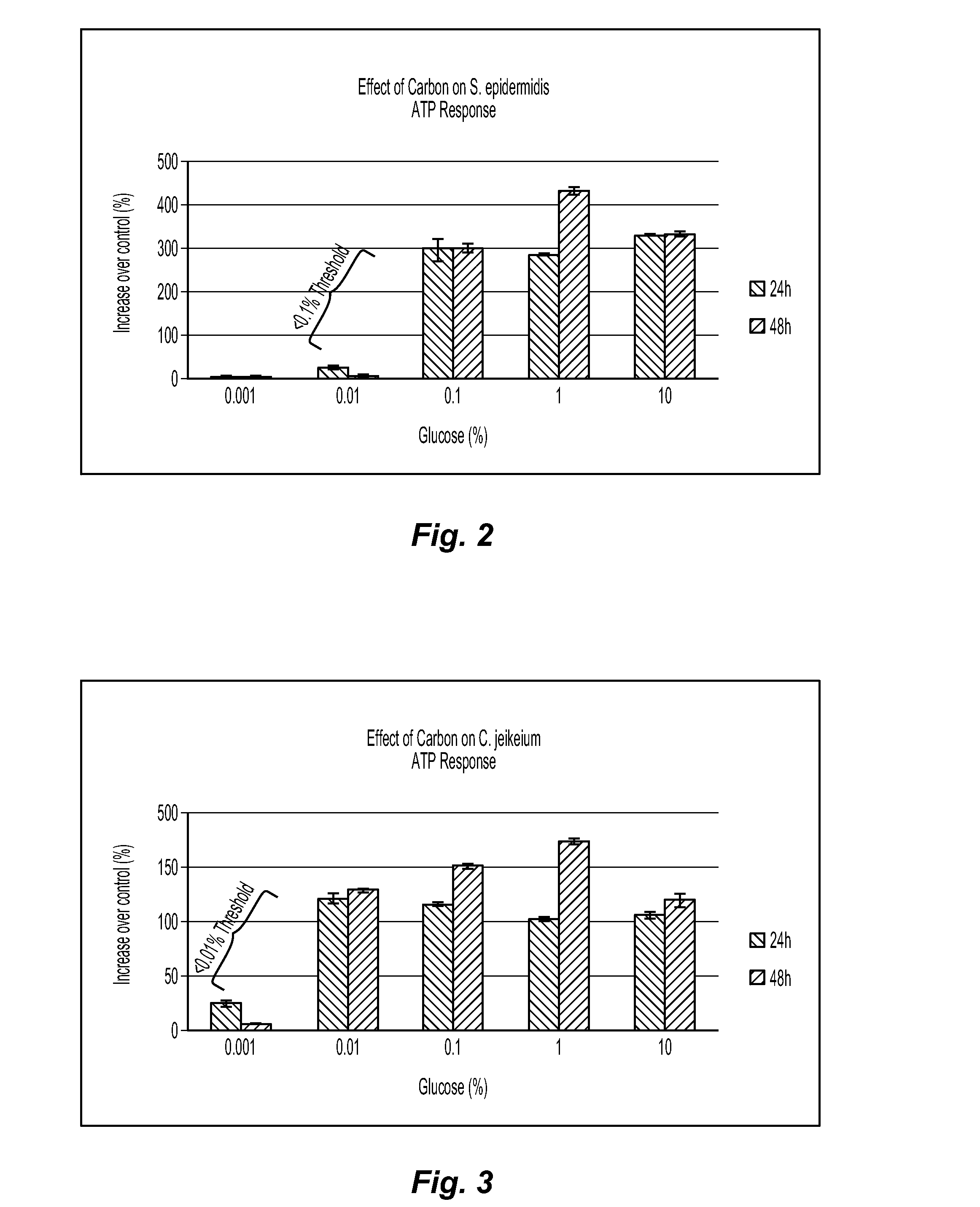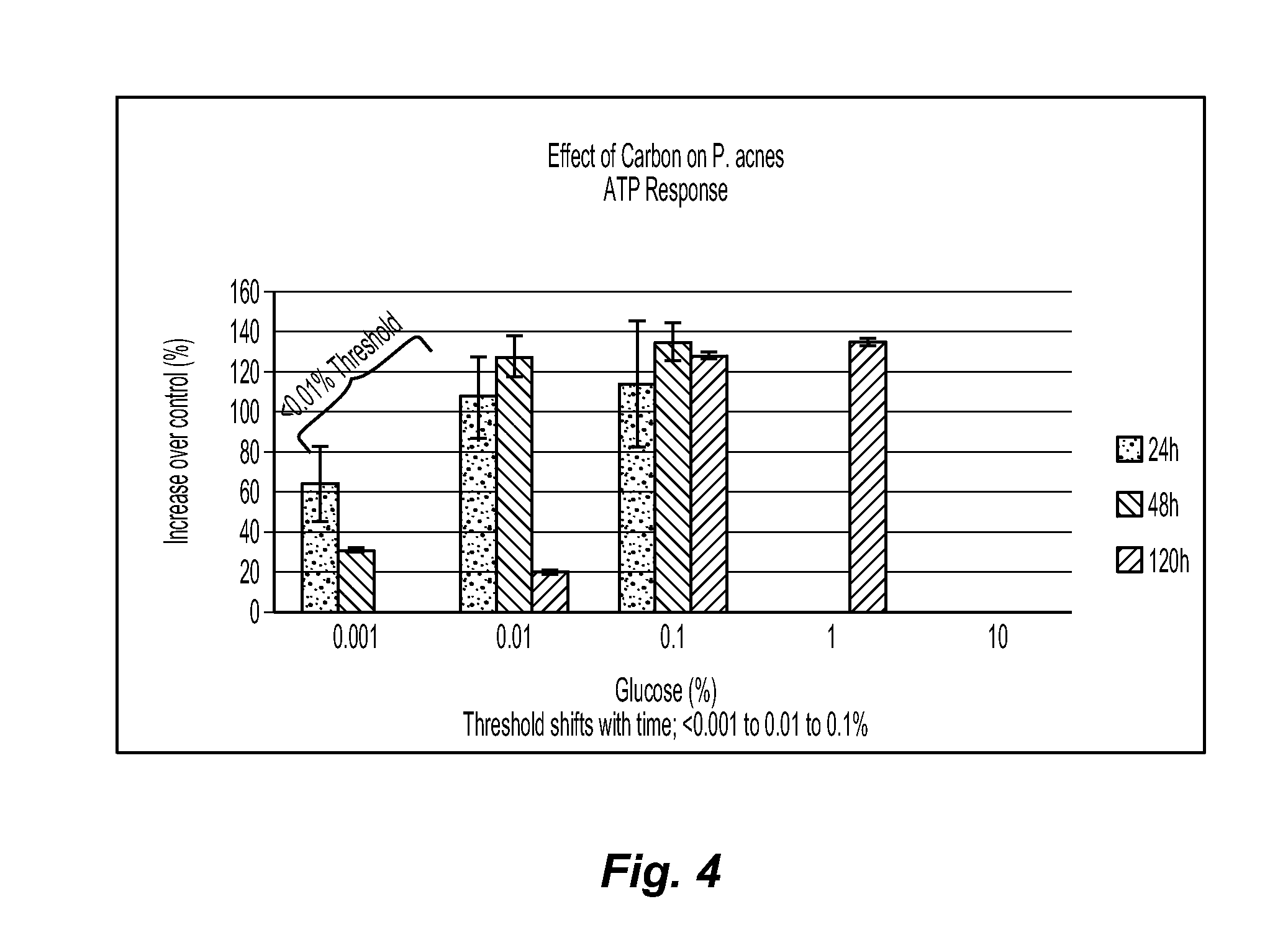Method of identifying prebiotics and compositions containing the same
a prebiotic and composition technology, applied in the field of identifying test agents, can solve the problems of host and/or microflora unsatisfactory effects, skin irritation, and further undesirable health and/or cosmetic effects on the hos
- Summary
- Abstract
- Description
- Claims
- Application Information
AI Technical Summary
Benefits of technology
Problems solved by technology
Method used
Image
Examples
example 1
[0076]Example 1 demonstrates that media selection can be a variable for determining whether a test agent exhibits prebiotic activity. In this example, three different classes of media are compared for their effect on C. jeikeium, S. epidermidis, and P. acnes. The C. jeikeium, S. epidermidis, and P. acnes are obtained from American Type Culture Collection (ATCC) in Manassas, Va. as Catalog Nos. 43734, 12228, and 11827, respectively. The first class of media is represented by a conventional rich growth medium used to grow each of the three microorganisms. The second class of media is represented by Gastrointestinal Prebiotic Medium (“GIPM”), which is a medium commonly used for testing with gastrointestinal microorganisms. GIPM is made from peptone water, bile salts, NaCl, NaHCO3, K2HPO4, Tween 80, KH2PO4, hemin, MgSO4.7H2O, vitamin K1, CaCl2.6H2O, and cystein.HCl. The third class of media is represented by an MCM suitable for use with the novel methods disclosed herein. The MCM is mad...
example 2
[0084]Example 2 compares the results of an ATP assay to a plate count assay. The plate count assay is a generally accepted assay known in the art for measuring growth or survival of cultivable bacteria in a culture. While plate counts can be a useful tool to identify prebiotic materials, it is considered a low-throughput, resource intensive method for prebiotic assessment and predicting whether a test agent will exhibit in vivo prebiotic activity on human skin commensal microorganisms. In contrast, using the ATP assay as a pre-screening tool provides increased through-put and substantially less resources when screening test agents for prebiotic activity. Furthermore, ATP results are generally predictive of plate count results, and thus it is believed that the results of the ATP assay are reliable enough to provide an initial screening method for quickly identifying prebiotic candidates for further testing.
[0085]Example 2 utilizes starter cultures of C. jeikeium, S. epidermidis, and ...
PUM
 Login to View More
Login to View More Abstract
Description
Claims
Application Information
 Login to View More
Login to View More - R&D
- Intellectual Property
- Life Sciences
- Materials
- Tech Scout
- Unparalleled Data Quality
- Higher Quality Content
- 60% Fewer Hallucinations
Browse by: Latest US Patents, China's latest patents, Technical Efficacy Thesaurus, Application Domain, Technology Topic, Popular Technical Reports.
© 2025 PatSnap. All rights reserved.Legal|Privacy policy|Modern Slavery Act Transparency Statement|Sitemap|About US| Contact US: help@patsnap.com



